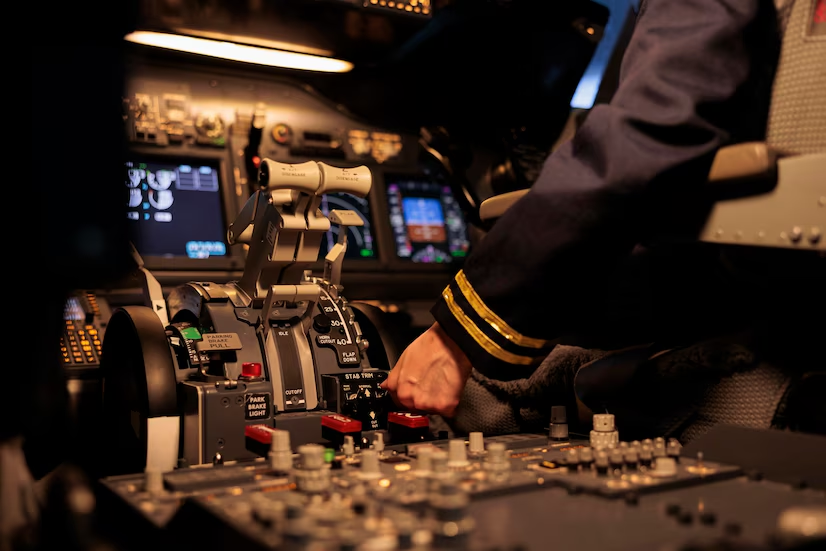Welcome to our blog post on how busbars enhance energy efficiency in industrial settings! In today’s fast-paced world, optimizing energy consumption has become more crucial than ever. Industries are constantly seeking innovative solutions to reduce wastage and improve overall efficiency. And that’s where busbars come into the picture.
If you’re wondering what exactly busbars are and how they contribute to energy efficiency, you’ve come to the right place! In this article, we’ll dive deep into the world of busbars, exploring their design, functionalities, and the numerous benefits they bring to industrial environments. So let’s get started and uncover the power behind these ingenious electrical components!
Table of Contents
What Are Busbars
Busbars are an essential component in electrical power distribution systems, commonly used in industrial settings. They are essentially conductors that provide a low-impedance path for the flow of electric current. Unlike traditional wiring methods which use individual cables, busbars consist of a solid metal strip or bar that efficiently carries and distributes electricity.
The design and placement of busbars play a crucial role in optimizing energy efficiency. One popular type is laminated busbars, which involve stacking multiple layers of conductive material separated by insulating layers. This design allows for compactness while minimizing losses due to resistance and heat dissipation.
Flexible busbars are another option that offers versatility in terms of shape and routing options. These flexible copper-based connectors can be bent or twisted to fit into tight spaces or around obstacles, contributing to efficient space utilization.
In addition to their physical attributes, busbars also serve various functionalities within industrial applications. They can act as primary power distribution points, connecting different sources such as generators or transformers with loads throughout the facility. Busbar systems also provide quick access for maintenance purposes without disrupting the entire system.
One significant advantage of using busbars is their contribution to energy efficiency in industrial settings. With smart monitoring solutions integrated into the system, real-time data on energy consumption can be obtained effortlessly. This information allows operators to identify any inefficiencies promptly and take appropriate actions such as load balancing or equipment optimization.
Furthermore, by implementing power monitoring technologies alongside busbar installations, businesses gain better control over their energy usage patterns. Power optimization techniques can then be employed based on these insights, leading to reduced wastage and improved overall operational efficiency.
Various industries benefit from utilizing busbar technology for enhanced energy efficiency. For example, manufacturing plants heavily rely on electricity-intensive machinery that requires precise control over power distribution channels to minimize downtime and maximize productivity gains. Data centers also utilize sophisticated electrical systems where reliable performance is paramount for smooth operations.
Busbar Design and Placement
Busbar Design and Placement play a crucial role in ensuring optimal energy efficiency in industrial settings. These components are carefully designed to provide efficient power distribution throughout the facility.
When it comes to busbar design, laminated busbars are commonly used due to their high conductivity and reliability. These consist of copper or aluminum conductors sandwiched between layers of insulating material, creating a compact and robust structure that can handle high currents.
Flexible busbars offer even greater flexibility in terms of layout and installation. With their bendable nature, they can be easily shaped to fit tight spaces or follow complex paths, minimizing the need for additional wiring and reducing energy losses.
The placement of busbars is equally important. They are strategically positioned close to power-consuming equipment to minimize transmission distances and reduce voltage drop. This ensures that electricity reaches its destination with minimal loss.
Additionally, proper placement allows for efficient heat dissipation as excess heat generated during operation can be quickly transferred away from the electrical components through the busbars’ conductive materials.
Careful consideration must be given to both design and placement when implementing busbars in industrial settings. By choosing the appropriate type of busbar and positioning them effectively, businesses can enhance energy efficiency while maintaining reliable power distribution throughout their operations.
Laminated Busbars
Laminated busbars are a crucial component in industrial settings when it comes to enhancing energy efficiency. These busbars consist of layers of conductive materials, such as copper or aluminum, that are sandwiched between insulating layers. This design not only provides excellent electrical conductivity but also ensures safety and reliability.
One key advantage of laminated busbars is their compact size. By eliminating the need for individual cables and connectors, these busbars take up much less space compared to traditional wiring systems. This allows for more efficient use of floor space in industrial facilities.
Additionally, laminated busbars offer improved heat dissipation capabilities. The multiple layers help distribute heat evenly across the surface, preventing hotspots and reducing the risk of overheating. This not only increases the lifespan of electrical components but also minimizes energy wastage due to excessive heat loss.
Another benefit is their flexibility in design and installation. Laminated busbars can be customized to meet specific requirements and easily integrated into existing power distribution systems. Whether it’s a complex layout or a tight space constraint, these busbars can be tailored accordingly for optimal performance.
Moreover, laminated busbars reduce impedance losses by providing low resistance paths for current flow. This translates to lower voltage drops along the distribution network and consequently reduces energy consumption.
Laminated busbars play a vital role in enhancing energy efficiency in industrial settings through their compact size, superior heat dissipation properties, flexible design options, and reduced impedance losses. By implementing these advanced electrical solutions, industries can optimize power distribution systems while minimizing energy waste.
Flexible Busbars
One innovation that has been gaining popularity in industrial settings for enhancing energy efficiency is the use of flexible busbars. These innovative electrical conductors offer a range of benefits and functionalities that make them ideal for various industries.
Flexible busbars are designed to be highly adaptable, allowing for easy installation and reconfiguration. They consist of multiple layers of copper or aluminum laminates separated by insulating materials, encased in a flexible outer coating. This design allows them to bend and flex without compromising their electrical conductivity.
The flexibility of these busbars enables efficient routing around obstacles or tight spaces, eliminating the need for complex wiring configurations. Additionally, their compact size reduces resistance and heat buildup, further improving energy efficiency.
These busbars can also handle high current loads while maintaining low voltage drop due to their low impedance characteristics. This ensures minimal power loss during transmission, resulting in increased overall system efficiency.
Furthermore, flexible busbars provide enhanced safety features such as reduced risk of short circuits and better thermal management compared to traditional rigid copper bars. The insulating materials used between the laminates prevent accidental contact with live parts and improve insulation performance.
In addition to improving energy efficiency through their design features, flexible busbars also enable smart monitoring solutions that optimize power usage. By integrating monitoring devices directly onto the buses themselves, real-time data on power consumption can be collected and analyzed.
This data-driven approach allows businesses to identify areas where energy wastage occurs and implement targeted optimization strategies accordingly. By closely monitoring power distribution throughout an industrial facility, operators can adjust load balancing settings or detect any anomalies promptly.
Industries across various sectors have recognized the potential benefits of using flexible busbar systems for energy efficiency improvements. From manufacturing plants to data centers and renewable-energy installations, these technologies have proven effective at reducing costs associated with electricity consumption while promoting sustainability goals.
Flexible busbars offer significant advantages when it comes to enhancing energy efficiency in industrial settings. Their adaptability, low resistance, and
Busbar Functionalities
Busbars are not just simple conductors. They offer a range of functionalities that contribute to enhancing energy efficiency in industrial settings. One key functionality is their ability to distribute power effectively and efficiently. By providing a centralized electrical pathway, busbars reduce the need for multiple connections and minimize power losses.
Another important functionality of busbars is their capacity for thermal management. Busbar systems can be designed with heat dissipation features such as cooling fins or liquid cooling channels. This helps to dissipate excess heat generated during high-power operations, preventing overheating and ensuring optimal performance.
Furthermore, busbars can also incorporate insulation materials to prevent electrical shorts and improve safety. Insulated busbars provide an added layer of protection against accidental contact with live parts, reducing the risk of electrical hazards.
Additionally, some advanced busbar designs include integrated monitoring systems that enable real-time tracking of power consumption and load balancing. This allows operators to identify energy wastage or imbalances in the system promptly and take corrective measures.
Moreover, busbars can support smart automation technologies by integrating data communication capabilities into their design. This enables seamless connectivity between different components within an industrial setup, facilitating efficient control and coordination of power distribution.
The functionalities offered by busbars go beyond basic electrical conduction. Their ability to distribute power effectively while managing heat dissipation, ensuring safety through insulation, enabling monitoring solutions, and supporting automation makes them indispensable for achieving energy efficiency in industrial settings.
Benefits of Busbars in Energy Efficiency
Busbars play a crucial role in enhancing energy efficiency in industrial settings. By providing a reliable and efficient distribution system, busbars offer several benefits that contribute to optimizing energy usage.
One of the key advantages of using busbars is their ability to minimize power losses. Traditional wiring systems often experience voltage drops and heat dissipation during transmission, resulting in energy wastage. However, busbars have low impedance and high conductivity properties, which significantly reduce these losses.
Another benefit of using busbars is their compact design. Unlike conventional cables, which can take up a significant amount of space, busbars occupy less area while handling higher current capacities. This space-saving feature allows for better utilization of available floor space in industrial facilities.
Additionally, busbar systems are highly flexible and customizable. They can be easily designed to fit specific requirements based on the load demand and electrical layout of the facility. This adaptability ensures optimal power distribution without unnecessary cable lengths or additional connections that could lead to energy inefficiencies.
Furthermore, busbar systems enable effective load management by providing multiple tap-off points along the length of the bar. This feature allows for precise control over power distribution to different sections within an industrial setting according to their individual needs.
Utilizing busbars in industrial settings offers numerous benefits for enhancing energy efficiency. From minimizing power losses and maximizing space utilization to enabling customized load management capabilities, busbar systems provide efficient solutions for optimizing energy consumption across various industries.
Smart Monitoring Solutions
Smart Monitoring Solutions play a crucial role in enhancing energy efficiency in industrial settings. These advanced systems utilize cutting-edge technology to monitor and optimize the performance of busbars, ensuring that energy is utilized effectively.
With Smart Monitoring Solutions, real-time data on power consumption, voltage levels, and temperature can be collected and analyzed. This allows for immediate identification of any abnormalities or inefficiencies within the electrical system. By detecting potential issues early on, proactive measures can be taken to address them before they escalate into more significant problems.
Furthermore, these monitoring solutions enable remote access to critical information about the busbars’ performance. This means that operators can easily track energy usage trends and make informed decisions regarding load balancing and optimization.
In addition to providing valuable insights into energy consumption patterns, Smart Monitoring Solutions also facilitate predictive maintenance. By continuously monitoring key parameters such as current levels and insulation resistance, potential faults or failures can be predicted with high accuracy. This enables timely intervention to prevent costly downtime or equipment damage.
Moreover, these systems often come equipped with intelligent alarm features that alert operators in case of abnormal conditions or deviations from set parameters. Such notifications allow for swift action to rectify issues promptly while minimizing disruption to operations.
Smart Monitoring Solutions are instrumental in maximizing the energy efficiency of busbars by enabling real-time monitoring, analysis of data trends, predictive maintenance capabilities, and automated alerts for prompt interventions.
Power Monitoring and Optimization
In today’s fast-paced industrial environment, it is essential to constantly monitor and optimize power usage. This not only helps in reducing energy wastage but also enhances overall operational efficiency. Busbars play a crucial role in this process by providing valuable data on power consumption.
By integrating smart monitoring solutions with busbar systems, companies can gain real-time insights into their energy usage patterns. These solutions enable the collection of detailed information regarding voltage fluctuations, power quality, and load distribution. Armed with this knowledge, businesses can identify areas where energy is being wasted or inefficiently utilized.
Once problem areas are identified, optimization strategies can be implemented to improve overall energy efficiency. By redistributing loads or making adjustments to equipment settings based on the collected data from busbars, companies can reduce unnecessary power consumption and lower their carbon footprint.
Furthermore, power monitoring allows for proactive maintenance practices as potential issues can be detected early on before they escalate into major problems. By identifying equipment that may be operating at suboptimal levels or drawing excessive power, measures can be taken to rectify these issues promptly.
Incorporating power monitoring and optimization techniques through the use of busbars enables industries to achieve significant improvements in energy efficiency. It empowers businesses with actionable insights that lead to reduced costs and increased sustainability while ensuring smooth operations without compromising productivity or functionality.
Remember: Always think ahead when it comes to optimizing your industrial processes!
Industries that Utilize Busbars for Energy Efficiency
Industries across various sectors are increasingly recognizing the importance of energy efficiency in their operations. One key component that plays a crucial role in enhancing energy efficiency is busbars. These ingenious electrical conductors are widely utilized by industries to optimize power distribution and reduce energy wastage.
In the manufacturing industry, busbars are commonly used in heavy machinery and equipment where large amounts of electricity are required. By utilizing busbars, manufacturers can efficiently distribute power to different components, eliminating the need for multiple individual cables and reducing energy losses due to resistance.
The renewable energy sector also heavily relies on busbar technology for its efficient operation. In solar panel installations, busbars connect individual cells within each module, ensuring optimal power output while minimizing losses caused by internal resistance.
Furthermore, data centers, which consume massive amounts of electricity to run servers and cooling systems, benefit greatly from using busbars. With their high current-carrying capacity and low impedance characteristics, these electrical conductors enable efficient power distribution throughout the facility while minimizing voltage drops.
Even transportation industries such as electric vehicles (EVs) utilize busbar technology for effective battery management systems. Busbars play a critical role in connecting battery modules together efficiently without wasting valuable energy during charging or discharging processes.
Industries ranging from manufacturing to renewable energy and data centers all leverage the benefits of using busbars for enhanced energy efficiency. By optimizing power distribution and reducing wastage through innovative design solutions like laminated or flexible options, these industries not only save on operational costs but also contribute towards a greener future with reduced carbon footprints
How Busbars Improve Energy Efficiency in Industrial Settings
Busbars are crucial components in industrial settings that play a significant role in enhancing energy efficiency. These electrical conductors are designed to efficiently distribute power throughout the facility, minimizing energy loss and optimizing performance.
One way busbars improve energy efficiency is through their design and placement. Laminated busbars, for example, offer enhanced thermal management capabilities, ensuring efficient heat dissipation. They also reduce the need for additional cooling systems, saving energy and reducing costs.
Flexible busbars provide another advantage by allowing for more compact and streamlined designs. Their flexibility enables easier installation in tight spaces, eliminating unnecessary wiring and reducing power losses due to resistance.
In addition to their design benefits, busbars offer various functionalities that contribute to energy efficiency. For instance, smart monitoring solutions enable real-time monitoring of power usage across different sections of the facility. This data can help identify areas of high consumption or inefficiency so that corrective measures can be taken promptly.
Moreover, busbars facilitate effective power monitoring and optimization. By integrating intelligent control systems with busbar networks, operators can regulate electricity distribution based on demand patterns or time-of-use rates. This targeted approach minimizes waste and maximizes energy utilization.
Industries across various sectors have recognized the advantages of utilizing busbars for improved energy efficiency. From manufacturing plants to data centers and renewable energy facilities—busbars have become essential components in these industries’ quest for sustainability while achieving cost savings.
The benefits of using busbars extend beyond just reducing wasteful expenditure on electricity bills; they also promote a greener image by lowering carbon emissions associated with excessive power consumption.
By providing a reliable method of distributing electrical current efficiently within an industrial setting while minimizing wastage at every step along the way—from generation to end-user—busbars significantly contribute towards improving overall energy efficiency levels.
Cost of Ownership
When it comes to industrial settings, cost is always a crucial factor to consider. The cost of ownership plays a significant role in determining the overall efficiency and profitability of any operation. Busbars, with their numerous advantages, offer notable benefits when it comes to reducing the cost of ownership.
Busbars are highly durable and require minimal maintenance. Unlike traditional wiring systems that often need frequent repairs and replacements, busbars have a long lifespan and can withstand harsh conditions. This means fewer expenses on repairs and replacements over time.
Additionally, busbars are designed for optimal energy distribution. By minimizing energy losses during transmission, they help reduce electricity bills significantly. With rising energy costs being a major concern for industries today, this translates into substantial savings in operational expenses.
Moreover, the installation process for busbars is relatively quick and straightforward compared to other electrical systems. This reduces labor costs associated with installation while ensuring timely completion of projects.
Furthermore, busbar systems provide flexibility in design and scalability options as per specific requirements. This adaptability eliminates unnecessary expenditures related to system modifications or expansions in the future.
By considering factors such as durability, efficient energy distribution capabilities, ease of installation along with design flexibility and scalability options; businesses can effectively manage their cost of ownership through the utilization of busbar solutions.
Promoting Energy Efficiency
One of the key benefits of using busbars in industrial settings is their ability to promote energy efficiency. By utilizing these efficient power distribution systems, businesses can significantly reduce their energy consumption and minimize wastage.
Busbars are designed to provide a reliable and low resistance path for electricity, minimizing losses due to heat dissipation. This means that less energy is wasted during transmission compared to traditional wiring methods. The design and placement of bsbars also play a crucial role in optimizing energy efficiency.
Additionally, smart monitoring solutions can be integrated into busbar systems, allowing real-time monitoring of power usage. This enables businesses to identify any areas where energy consumption can be optimized and make necessary adjustments accordingly.
Another way bsbars contribute to promoting energy efficiency is through power monitoring and optimization capabilities. With advanced features such as load balancing and voltage regulation, busbar systems help distribute electrical current evenly across various equipment or machinery, reducing the risk of overloading or underutilization.
Industries across various sectors can benefit from incorporating bsbars into their operations for improved energy efficiency. From manufacturing plants to data centers, the use of efficient power distribution systems like bsbars helps minimize waste and optimize overall electricity usage.
In conclusion,
the integration of bsbars in industrial settings offers numerous advantages when it comes to promoting energy efficiency. Through their design and functionality, they effectively minimize wastage while providing optimal power distribution. Furthermore, with the implementation of smart monitoring solutions, businesses gain valuable insights into their energy consumption patterns which allows them to make informed decisions on how best to optimize their operations for maximum efficiency
Case Studies and Success Stories
One of the best ways to understand the impact of bsbars on energy efficiency in industrial settings is by looking at real-life case studies and success stories. These examples showcase how bsbars have revolutionized the way industries manage their power distribution systems.
In a recent case study, a manufacturing facility implemented laminated busbrs in their electrical infrastructure. The result? A significant reduction in energy loss and improved overall system performance. With more efficient power transfer and reduced resistance, the facility was able to optimize its operations while reducing energy consumption.
Another success story comes from an automotive assembly plant that integrated flexible bubars into their production lines. By eliminating traditional copper cables and replacing them with flexible busbars, they were able to achieve enhanced space utilization and simplified maintenance processes. This not only improved energy efficiency but also resulted in cost savings for the company.
These are just two examples among many where busbar technology has made a tangible difference in enhancing energy efficiency. From data centers to renewable energy facilities, various industries have embraced busbars as a solution for optimizing power distribution systems.
By implementing smart monitoring solutions alongside buses bars, companies can gain valuable insights into their power usage patterns and identify areas for further improvement. Real-time monitoring allows businesses to track electricity consumption, detect potential issues or inefficiencies promptly, and take corrective actions accordingly.
Power monitoring is another key functionality offered by modern busbar systems. By continuously measuring voltage levels, current flow rates, and power factor values within an industrial setting, operators can identify opportunities for load balancing or optimization measures that can lead to significant energy savings over time.
In conclusion (as per instruction), these case studies demonstrate how incorporating innovative busbar designs into industrial settings leads to remarkable improvements in energy efficiency outcomes. Whether it’s through laminated or flexible structures or through advanced functionalities like smart monitoring or optimized power management – there’s no denying that utilizing superior quality busbar technology empowers industries to become more sustainable while maximizing profitability!
Conclusion
In today’s increasingly energy-conscious world, industrial settings are constantly seeking ways to enhance their energy efficiency. One powerful solution that has proven effective in this endeavor is the use of busbars. These ingenious components offer a range of benefits, including improved power distribution, reduced energy losses, and enhanced safety.
Busbars come in various designs and can be strategically placed within an industrial facility to maximize their effectiveness. Laminated busbars provide excellent insulation properties and are ideal for applications where space is limited. On the other hand, flexible busbars offer versatility and easy installation in complex layouts.
The functionalities of busbars further contribute to energy efficiency by enabling smart monitoring solutions and optimizing power usage. With advanced technologies like real-time monitoring systems, facility managers can closely monitor energy consumption patterns and identify areas for improvement. This data-driven approach allows for targeted optimization efforts that ultimately reduce waste and save costs.
Numerous industries have embraced the advantages of using busbars for improved energy efficiency. From manufacturing plants to data centers, these sectors recognize the value of investing in technologies that deliver long-term cost savings while also reducing environmental impact.
When it comes to enhancing energy efficiency in industrial settings, busbars play a vital role on multiple fronts. Their low resistance ensures minimal power loss during transmission, leading to reduced electricity bills over time. Moreover, by promoting efficient power distribution across different sections of a facility or equipment, they prevent overloading issues and potential downtime.
Real-life case studies demonstrate how businesses have successfully implemented busbar solutions to achieve significant improvements in their overall energy efficiency performance. By embracing such innovative technologies early on, these companies gain a competitive edge while contributing positively towards sustainability goals.





